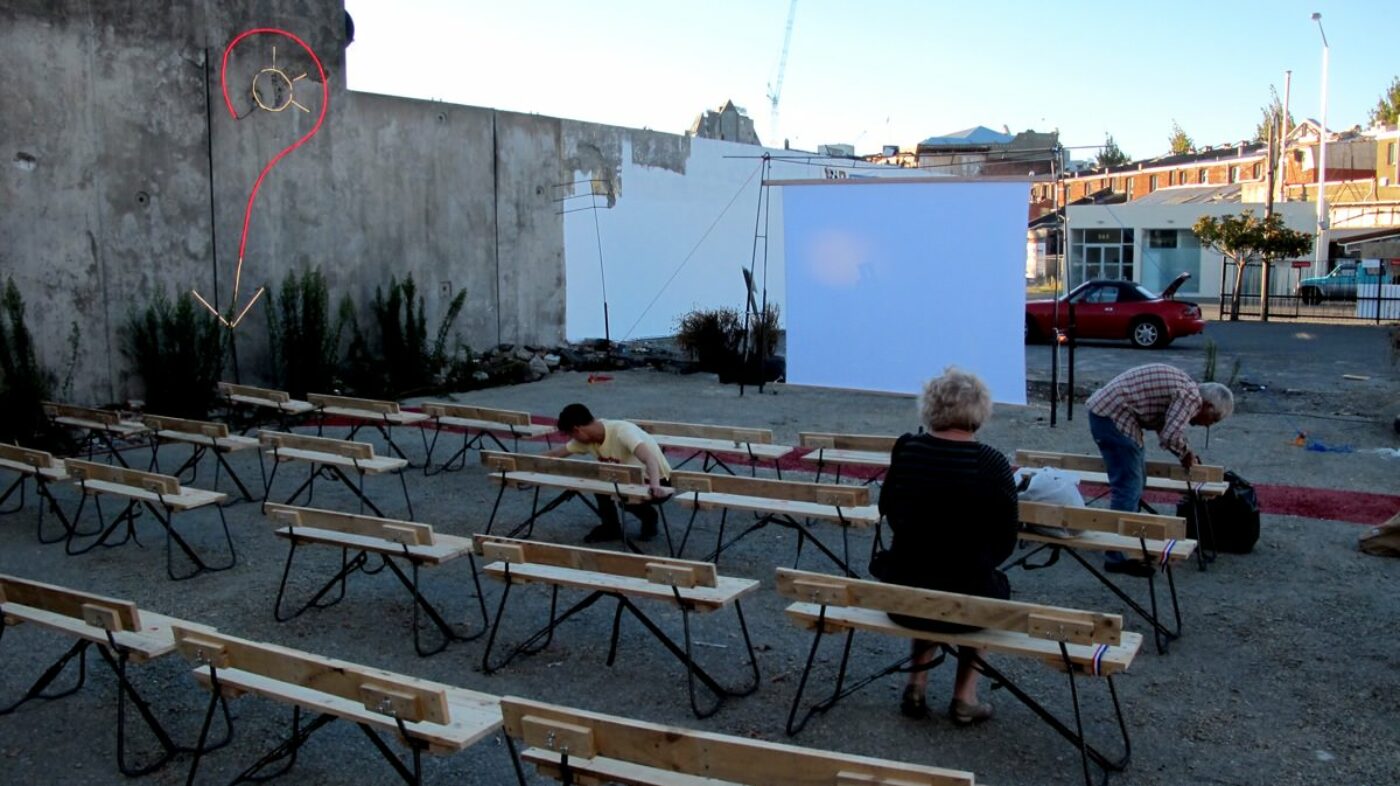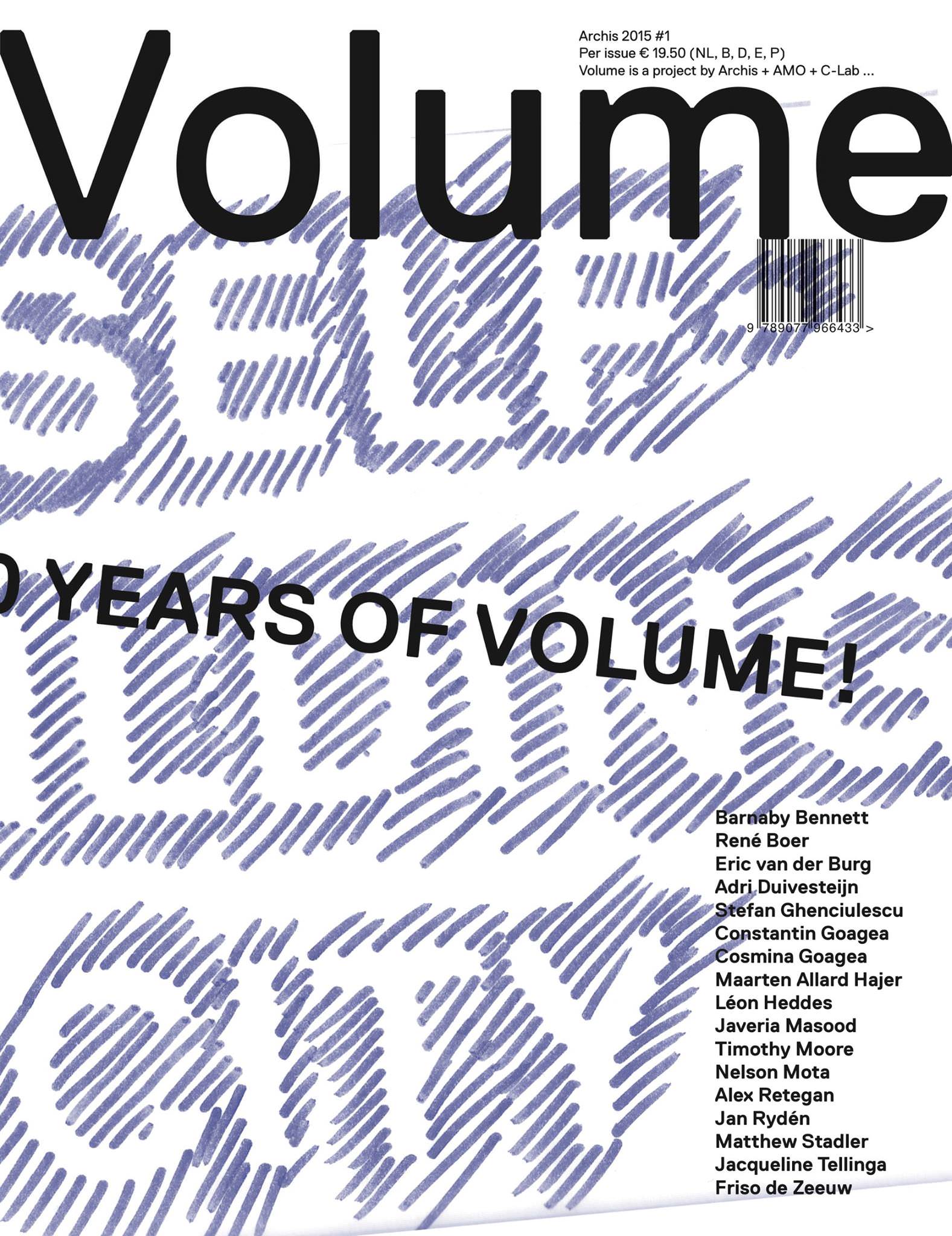The Transitional City

If there is a moment to test a community’s resilience, it is after disaster has struck. Such situations often show a community pulling together in a shared feeling that ‘things’ have to be done, but also ambition to be involved and participate on an individual level. Christchurch, New Zealand was no exception when the city was ruined by a series of earthquakes. Yet, it may have come as a surprise for most to see how many people felt engaged and how many (temporary) projects were being proposed and executed. Maybe less surprising was the tendency among existing structures and powers to just carry on. The self-building city was welcomed at first, or maybe just tolerated by the powers that be, provided it wasn’t in the way of business as usual. So, how fundamental a change did we actually see?
It happened again. At 12.51 pm on 22 February 2011, a large earthquake shook Christchurch, the second-largest city of New Zealand. Between September 2010 and the end of 2012, over 13,000 earthquakes jolted the city of 342,000 people, but the February 2011 quake was different. The city was devastated. Buildings and infrastructure were damaged; 185 people were killed.1 A national state of emergency was declared the following day: the core of the city was shut down and cordoned off as a public exclusion zone. It would be over two years before citizens could return freely to the shattered city center.
Four years on: over 70 percent of the central business district has been demolished; 10,000 houses in the surrounding suburbs have been razed, while almost another 15,000 stand empty; and the long task of repairing the extensive damage to water, sewerage, and transport infrastructure continues. In July 2012, fourteen months after the February quake, the New Zealand government announced a blueprint for rebuilding the central city. This intensive plan focuses on the construction of major projects, including a convention center, sports stadium, performing arts center, and an innovation and health precinct. At the end of 2014, only one of the eighteen projects has been finished. Many projects are behind schedule, with some like the new stadium still possibly ten years away from completion.2 There is also a lack of international private investors willing to risk their money.
For many local residents there is a dissonance between the government’s plans for the city and their everyday concerns, which continue to be burdened with various hardships and stresses. The blueprint and its implementation remain controversial. In 2.5 years during the design of eighteen projects, there has only been four moments of public engagement.3 Apart from these few moments there is a complete absence of public engagement: a NZ$500-million-dollar (US$376 million) convention center (with NZ$284 million [US$214 million] of public money), a NZ$100-million-dollar (US$75 million) river park, a major bus station, an innovation precinct, housing for 5000 people, major commercial development, and public squares being led by a publicly owned Development Unit with no public consultation.
In the interim period, during the slow and calculated planning, construction and completion of the blueprint, residents and community organizations have not been passive. Citizens, businesses, NGOs, and artist and community groups have initiated and implemented hundreds of transitional projects that begin re-imagining and rebuilding the city.

The term transitional was first used in the context of Christchurch within the Christchurch City Council (CCC) Central City Plan, which responded to the first big earthquake in 2011 (which was later superseded by the central government’s 2012 blueprint). Transitional is preferred by the CCC planning department over temporary, as it suggests that small projects contribute to a larger purpose of rebuilding the city rather than being a momentary placeholder. Transitional projects in Christchurch have been made by a diversity of people with varied disciplines in order to create places and programs to meet, learn, work, debate, shop, broadcast, play, among many other verbs required to navigate daily life. They provide space for a large variety of types of social production: temporary cinemas, street festivals, urban sculptures, temporary venues for music and theater, street furniture, street art, markets, bike workshops, urban farming, sports and commercial spaces. Some of it is legal and consented, some are unconsented, while other projects are uninvited. The work is produced by a variety of actors from the council, community groups, artist collectives and small businesses to the result of anonymous interventions.
One small project that brought people together was the Dance-O-Mat, facilitated by citizen-led organization Gap Filler. It is a coin-operated dancefloor where music is generated once someone plugs their smartphone into a headphone jack and drops a NZ$2 coin in the slot. Once amplified, the empty space becomes a place where local instructors hold classes, performers dance, and teenagers enjoy programming their own music at night under bright lights in the midst of hundreds of darkened buildings waiting quietly for demolition. In November 2012 fierce architectural critic and British royal Prince Charles gave his approval to Dance-O-Mat with a nimble dance to swing jazz while his wife, Camilla, Duchess of Cornwall, shimmied about.
Another project facilitated by Gap Filler was the Lyttelton Petanque Club located on a vacant corner site in the port town of Lyttelton, which sits over the epicenter of the largest quake. The project was built over two weeks by 35 locals to create a multi-purpose community space with a petanque pitch, garden, performance space, and outdoor furniture; it was further adapted by residents over the following months without consultation. (Its unfinished quality suggested to residents that they could continue adapting the site.) Due to the success of the initiative, the CCC bought the land in mid-2012 and provided funding for citizens to test out ideas for a future square on the site. In 2014 the CCC built a NZ$2.8 million dollar (US$2.11 million) square on the site, which included incorporating some of the transitional projects and artworks created on site during the interim.
Transitional projects may not appear radical in their architectural form or programmatic content to architects and urbanists. In fact, their operation is very familiar in architectural discourses, often framed as tactical, adaptive, ameliorative, makeshift, bottom-up, opportunistic or user-generated urbanism. The architecture is often cheap, fast, ad-hoc, and unglamorous with recycled materials, volunteer labor, participatory design processes, and low budgets. The program is usually defined as social spaces: bars, performance venues, play areas, small parks or hang-out zones.
Despite this professional familiarity, transitional projects are new to the general populace of Christchurch, who have not been faced with the challenge of building a city before. In this unique context, transitional projects fulfil the urgent brief of addressing the need of providing agency to citizens to engage with a broken city, one that they have been excommunicated from for over two years. These projects are small, affordable and low-risk actions, often in response to relatively simple concerns such as the need for a place to dance, or a place to gather, celebrate, and mourn. In Christchurch the scale and speed of transitional projects has become a way to prototype ideas in space and open up the discussion and formation of the built environment to a wider group of people. It cuts straight to the goal of activating the city rather than working through many different scales and networks to achieve something abstract that may appear in master plan visioning documents like a ‘healthy urban environment’, or a ‘green’, ‘smart’, and ‘intelligent’ city.
The immediate concern of transitional projects has been social production. However, they have also become a tool with which to reimagine new types of institutions for the 21st century. Jocelyne Bourgon writes that many of our public institutions were founded in the 19th century but preparing for the 21st century requires completely different terms of engagement.4 This is realized in Christchurch through a participatory building process in transitional projects where many different interested parties contribute to a project’s creation. This is emphasized by the assemblage of actors that come together to build the project: designers, suppliers, laborers, volunteers. Property owners, local council and community groups become intertwined in city building. Many new organizations like Gap Filler, Life in Vacant Spaces (Livs), Ministry of Awesome, Greening the Rubble, The Food Resilience Network, Festival of Transitional Architecture, and the Student Volunteer Army have emerged. The CCC has already been influenced by this process by supporting transitional projects through loosening regulations and laws, unlocking sites, and providing funding and guidance with the Transitional City Projects Fund. Transitional projects become a way to unpick the logic in which planning departments design and plan a city towards a more adaptive and participatory approach.
The interim period between the state of emergency and the realization of the blueprint is a critical juncture for the functioning and identity of the city; it’s the space in which people are able to reimagine their city. The initial impulse to create transitional projects was of necessity. A response to the need for cultural activity, collective mourning, and a desire by people to engage in the remaking of their city.
After four years of activity, many transitional projects have come and gone. Most were not meant to last. Others have remained much longer than anticipated. The danger is not that individual projects have to end or that empty sites start to be built upon. The real danger is that this sort of alternative mode of engagement is curtailed as a moment of post-quake activity. Anticipating this, the transitional movement of Christchurch is now beginning to lobby for a greater say in the politics of city-rebuilding by connecting the various smaller groups with organizations that hold power in the city (such as government and developers). Documentaries, books, awards, letters of support and international recognition (in The New York Times, Lonely Planet, and The Guardian) continue to support this burgeoning movement and its impact on the city. This has transformed into a more conscious and well-articulated effort to take advantage of the once-in-a-lifetime opportunity to demonstrate the city as an experiment in alternative forms of urbanism and city-making. It is the hope that the post-quake experiments begin a new way of (re)building a city with more public participation, experimentation and adaptability.
While the transitional architecture in Christchurch has to be understood as a response to the unique challenges of a citizenry operating in a post-disaster context, it would be a mistake to overlook the fact that many of the issues are shared by cities without disasters: issues of how the environment is represented politically, the damage caused to cities by vacant sites, enabling different forms of democratic engagement in planning, creating spaces for non-capitalist forms of social interaction, and new forms of citizen-led governance and participation. Places like Christchurch undergoing radical transformation offer some important clues to other cities around the world as they face the issues of the 21st century, such as consequences of climate change, impact of new technologies, rises in energy prices, austerity politics, and the need for renewed forms of democratic engagement.
References
1. 115 deaths occurred in the six-story Canterbury Television Building (built in 1986) after it collapsed and caught on fire.
2. (2014). Once in a Lifetime: City-Building After Disaster in Christchurch (Christchruch: Freerange Press, 2014).
3. Young people were asked to help design a large playground, submissions were accepted for the large transport plan and a small part of commercial development in the south of the center, and one small part of the public park along the Avon-Otakaro River was opened for feedback, and the new library led by the Christchurch City Council has also had public input.
4. J. Bourgon, A New Synthesis of Public Administration: Serving in the 21st Century (Montreal/Kingston: McGills-Queens University Press, 2011).
 This article was published in Volume #43, ‘Self-Building City’.
This article was published in Volume #43, ‘Self-Building City’.